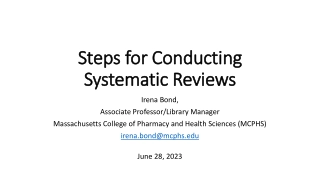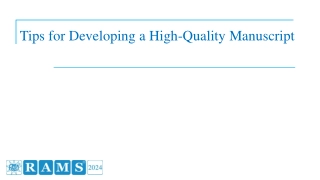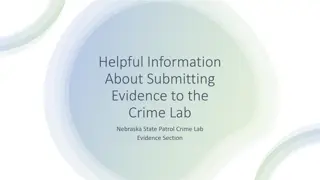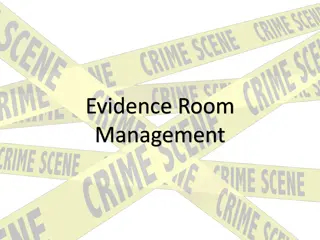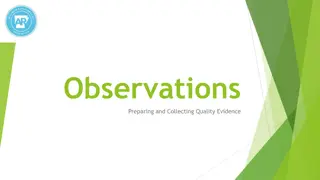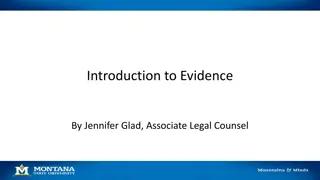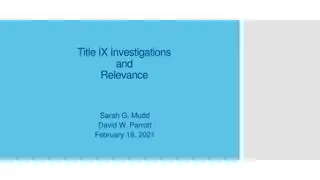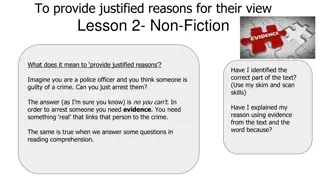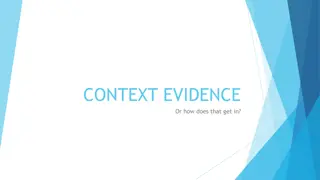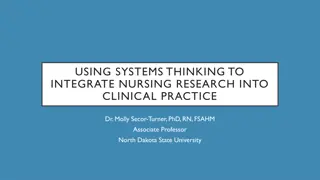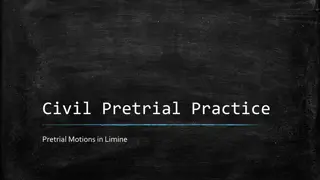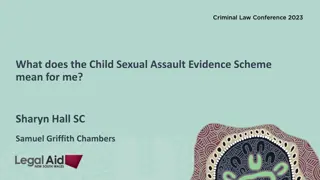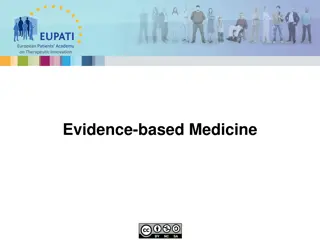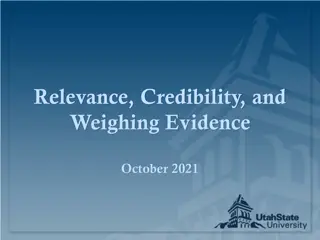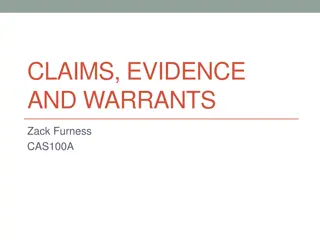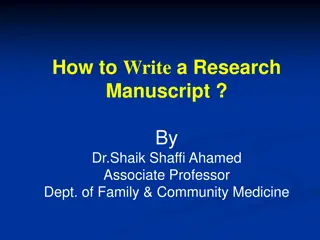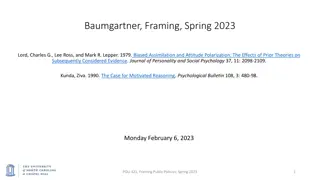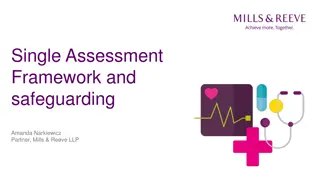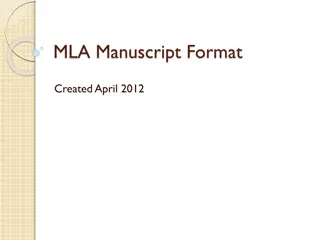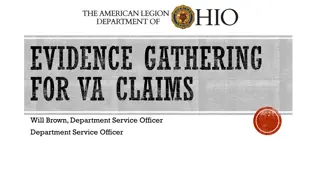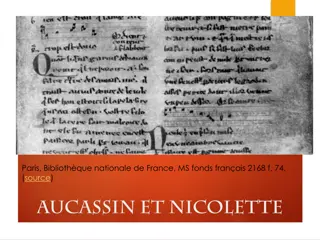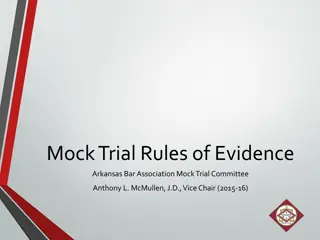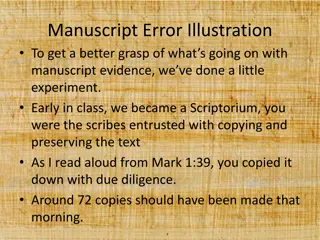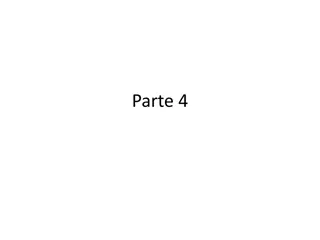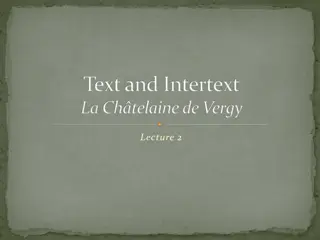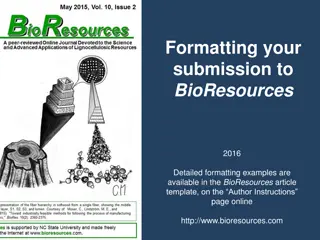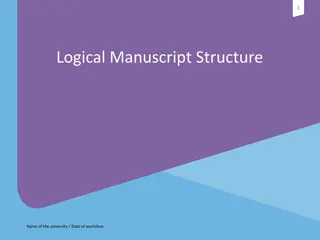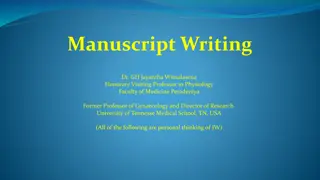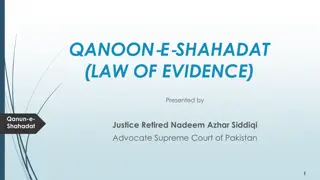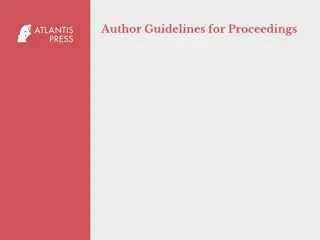Publication flow chart
In the publication flow chart for manuscript submission process, the steps from initial manuscript upload to final decision are outlined. The process includes initial checks by administrators, handling editor review, peer review, decision-making stages, and revision requests. Authors are guided on m
2 views • 12 slides
Steps for Conducting Systematic Reviews
Systematic reviews are a crucial method for summarizing evidence effectively. This comprehensive guide by Irena Bond provides step-by-step instructions for beginners and junior researchers, including defining a research question, developing inclusion criteria, conducting a search, data extraction, q
4 views • 27 slides
Tips for Developing a High-Quality Manuscript
Practical guidelines for creating a top-notch manuscript include understanding the background, adhering to the review process, complying with templates, and tips for successful presentations. The importance of starting correctly, following the manuscript template, and ensuring compliance with format
0 views • 17 slides
The Role of Artifacts and Evidence in Educator Evaluation and Support
Exploring the role of artifacts and evidence in educator evaluation, this content covers the three categories of evidence required by the Oregon Framework. It delves into the efficient process that reduces redundancy, essential components of SLG goals, and the types of evidence relevant to professio
0 views • 15 slides
Understanding Impression Evidence Collection in CSI Investigations
Impression evidence plays a crucial role in investigations, including shoeprints, tool marks, tire tracks, bite marks, and riffling marks on bullets. This evidence can be collected in 2D using photography or tape lifts, and in 3D through casting methods. Differentiating between class and individual
0 views • 21 slides
Helpful Information About Submitting Evidence to the Crime Lab.
Helpful information about submitting evidence to the Nebraska State Patrol Crime Lab's Evidence Section. Learn about the NSP 750 Evidence Submittal Form, submission process, and guidelines for resubmissions. Ensure all necessary details are provided for proper analysis of evidence.
5 views • 16 slides
Illegally obtained evidence
Illegally obtained evidence refers to evidence acquired through unlawful means, such as searches without warrants or extraction under duress. The Fruit of the Poisonous Tree doctrine renders evidence inadmissible if derived from illegally obtained evidence. The Exclusionary Rule prohibits the use of
2 views • 30 slides
Crafting a Stellar Manuscript: Insider Tips and Best Practices
Unveil the secrets to producing a top-notch manuscript with guidance on structuring, formatting, and reviewing processes. Learn how to kickstart your writing, adhere to manuscript templates, and present your work effectively. Elevate your writing game with expert insights for a successful publicatio
2 views • 17 slides
Evidence Room Management
Explore the intricacies of evidence room management in a law enforcement setting, including the roles of individuals like Greg Van Buskirk, differences in crime scene management between large and small departments, the distinction between property and evidence, the importance of maintaining chain of
0 views • 8 slides
Enhancing Evidence Collection in Education
Explore the importance of minimizing bias in evidence collection, review different types of evidence, identify strategies to collect quality evidence effectively, understand common biases affecting assessment, and learn to spot and address biased statements. Practice eliminating biased language and
0 views • 11 slides
Understanding Evidence in Investigations
Learn about the principles and types of evidence in investigations, including inculpatory and exculpatory evidence, physical, documentary, demonstrative, and verbal evidence. Explore sources of evidence and the significance of collecting relevant information to ensure a fair investigative process.
0 views • 14 slides
Understanding Title IX Investigations and the Role of Evidence Collection
The purpose of a Title IX investigation is to collect relevant evidence, both inculpatory and exculpatory, to allow for impartial decision-making regarding reported sexual harassment cases. Parties involved must receive sufficient notice and have opportunities to participate, present statements, and
1 views • 32 slides
Providing Justified Reasons in Reading Comprehension
Providing justified reasons in reading comprehension involves using evidence from the text to support one's answer, similar to presenting evidence in a legal case. Just as a police officer needs evidence to make an arrest, readers need textual evidence and the word "because" to support their respons
0 views • 11 slides
Understanding Context Evidence in Legal Proceedings
Context evidence in legal proceedings refers to evidence of acts not charged in the indictment, used to provide a background for understanding specific allegations. This type of evidence is often relied upon by the prosecution to explain events or behaviors that may seem isolated or surprising. It i
1 views • 13 slides
Integrating Nursing Research into Clinical Practice with Systems Thinking
Dr. Molly Secor-Turner emphasizes the importance of evidence-based practice (EBP) in nursing. EBP, derived from rigorous research, leads to quality patient outcomes by aligning services with current knowledge. The process involves identifying problems, critiquing evidence, implementing recommendatio
0 views • 21 slides
Examination of Witnesses under Indian Evidence Act, 1872
Chapter X of Part III of the Indian Evidence Act, 1872, outlines the process of examining witnesses, including the order of production and admissibility of evidence. Sections 135 to 141 delve into the rules governing the examination-in-chief, cross-examination, and re-examination of witnesses, empha
2 views • 8 slides
Understanding Pretrial Motions in Limine in Civil Pretrial Practice
Pretrial motions in limine (MIL) play a crucial role in civil pretrial practice by seeking evidentiary rulings in advance to control the introduction of evidence at trial. These motions aim to prevent the admission of irrelevant, inadmissible, or prejudicial evidence and can also facilitate the intr
1 views • 17 slides
Understanding the Child Sexual Assault Evidence Scheme
The Child Sexual Assault Evidence Scheme is a significant initiative that facilitates child sexual assault trials by introducing witness intermediaries and pre-recording of children's evidence. It applies to prescribed sexual offences and mandates specific provisions for hearings and evidence presen
1 views • 16 slides
Understanding Evidence-Based Medicine and Clinical Decision-Making
European Patients Academy on Therapeutic Innovation emphasizes the importance of Evidence-Based Medicine (EBM) in providing optimum clinical care. EBM involves systematic review and utilization of clinical research for informed decision-making, benefiting patients in disease management and treatment
7 views • 20 slides
Understanding Relevance, Credibility, and Weighing Evidence in Decision-Making
Explore the importance of relevance and credibility in evidence assessment, the role of hearing panels in evaluating evidence fairly, and the responsibilities they hold. Learn about presenting relevant evidence, policy analysis, and identifying irrelevant evidence to ensure a thorough review process
6 views • 32 slides
Mastering Claims, Evidence, and Warrants for Persuasive Writing
Understanding the concepts of claims, evidence, and warrants is crucial for constructing persuasive arguments. Claims represent positions to persuade, evidence supports claims with facts, and warrants bridge the gap between evidence and claims. An exercise is outlined to help practice forming claims
0 views • 8 slides
Guide to Writing a Research Manuscript
Writing a research manuscript involves various key components such as background reading, structuring the manuscript, focusing on methods and results, and ensuring comprehensive details are provided. It is essential to follow a systematic approach from the introduction to the discussion to effective
1 views • 41 slides
Understanding Biased Assimilation and Attitude Polarization in Social Disputes
People with strong opinions on complex social issues tend to interpret evidence in a biased manner, accepting confirming evidence readily while subjecting disconfirming evidence to critical evaluation. This can lead to increased polarization rather than narrowing of disagreement when exposed to the
0 views • 20 slides
Transformation of Quality Assessment Framework in Healthcare
The healthcare quality assessment framework is evolving with a new strategy focused on data-led, people's experiences, care integration, and safety culture. The current framework is transitioning towards a new approach by late 2023, incorporating separate registration and monitoring processes, five
0 views • 14 slides
MLA Manuscript Formatting Guidelines
Learn the essential rules for MLA manuscript formatting, including margins, heading and title structure, date format, title conventions, page numbering, tables and illustrations guidelines, all derived from the MLA Handbook for Writers of Research Papers.
0 views • 8 slides
Enago Manuscript Submission Process for EIFL Authors
Learn how to easily submit your manuscript to Enago for editing services tailored for EIFL authors. Follow the step-by-step guide from uploading your files to receiving the final edited document. Take advantage of various service levels, including the highly recommended Substantive Editing, and get
0 views • 8 slides
Understanding Evidence Gathering for VA Claims with The American Legion Department of Ohio
Evidence is crucial for VA claims, and it can come in various forms such as documents, written statements, photos, and video recordings. The framework for evaluating evidence includes factors like relevance, competence, credibility, and weight. Understanding the types of evidence, forms of relevance
0 views • 14 slides
Medieval Manuscript "Aucassin et Nicolette" - Bibliothèque nationale de France
An anonymous medieval manuscript, housed at the Bibliothèque nationale de France, fonds français 2168, contains the unique tale of "Aucassin et Nicolette." Likely originating from the 12th to 13th century in Picardy, the manuscript is a blend of various genres and features characters like Aucassin
0 views • 6 slides
Understanding Mock Trial Rules of Evidence
Mock Trial Rules of Evidence are crucial for determining the admissibility of testimony and evidence in a trial setting. Students preparing for cases need to assess evidence admissibility, make timely objections, and be prepared to defend testimony. The rules cover objections, specific objections ty
0 views • 36 slides
Deciphering Manuscript Errors in Mark 1:39
Unveiling the challenges of manuscript preservation, an experiment involving copying Mark 1:39 led to the discovery of 75 errors across 25 manuscripts. Despite variations, efforts to reconstruct the original text are underway, highlighting the complexity of textual analysis and historical accuracy i
0 views • 14 slides
Understanding Peer Review in Manuscript Submission Process
Peer review plays a crucial role in the manuscript submission process, ensuring the quality and validity of scientific research. Reviewers look for various aspects such as hypothesis relevance, experimental design, methodology, data analysis, and conclusions. Responding to reviewer comments and revi
0 views • 27 slides
Is the Bible Reliable? Exploring Historical Tests and Evidence
Explore the reliability of the Bible through historical tests like the Honesty Test and Telephone Test. Discover the proximity of events recorded, manuscript evidence, and more supporting the credibility of biblical accounts.
0 views • 20 slides
Practice and Procedure in Judicial Review: Factual Evidence and Interveners
The content provides valuable insights into the practice and procedure regarding factual evidence and interveners in judicial review cases. It covers general rules, recent cases, applications for oral evidence, questioning witnesses, opinion evidence, and the role of interveners. Key points include
0 views • 28 slides
Exploring Intertextuality in Medieval Manuscripts
Delve into the concept of intertextuality in medieval manuscripts, focusing on the Châtelaine de Vergy. Discover how manuscript culture and mouvance shape textual mobility and authorship perceptions. Uncover key points on manuscript variations and the dynamic nature of medieval works. Critically ex
0 views • 16 slides
Proper Organization of a Research Paper for Academic Success
Learn the essential components and structure of a research paper such as the IMRAD format, manuscript length, and manuscript organization steps. Understand the significance of each section - Introduction, Methods, Results, Discussion, and Conclusion - in presenting research effectively.
0 views • 43 slides
Formatting Your BioResources Submission for Better Results
Detailed examples and guidelines for formatting your submission to BioResources 2016 are provided in the article template available online. The formatting covers basic text format, manuscript parts, section sequence, tables, figures, abstract, and manuscript body requirements for an organized and pr
0 views • 20 slides
Mastering Logical Manuscript Structure for Effective Research Communication
Learn the essential components of a logical manuscript structure for research papers, covering the key questions your readers have, detailed guidance on introduction, methods, and results, and how to effectively present and discuss your findings. Enhance your research communication skills and contri
0 views • 12 slides
Understanding the Essence of Manuscript Writing in Science and Medicine
Exploring the concept of originality in scientific manuscripts, this piece delves into the pivotal role of observations, literature review, hypothesis testing, and statistical soundness in developing a compelling manuscript in the realms of science and medicine.
0 views • 58 slides
Understanding Qanun-e-Shahadat: Law of Evidence in Pakistan
Qanun-e-Shahadat Order 1984 replaced the Evidence Act of 1872 in Pakistan, aiming to align the law of evidence with Islamic principles. This law is crucial for judicial proceedings, governing the admissibility of oral and documentary evidence, primary and secondary evidence, and resolving conflicts
0 views • 22 slides
Guidelines for Authors: Manuscript Preparation Instructions
Follow these guidelines for preparing your final manuscript to ensure faster publishing and indexing. Use the provided template, correct title formatting, include authors' information properly, provide an abstract, keywords, and maintain consistent heading styles. Avoid common errors to prevent dela
1 views • 7 slides

